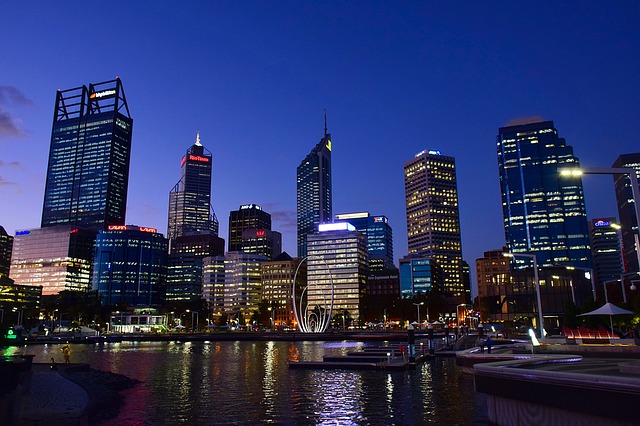By Tim Lambert
The Swan River Colony
Perth was founded in 1829 largely because the British feared the French would establish a colony in Western Australia. In 1827 Captain James Stirling (1791-1865) sailed to the Swan River in his ship HMS Success. Stirling believed the area would be ideal for a settlement. He persuaded the British government to found a colony there, independent of the colony in New South Wales.
Perth was named after the birthplace of Sir George Murray who was British Secretary of State for the Colonies when the city was founded in 1829. (Murray was born in Perth Scotland). However, this colony was not to be manned by convicts. Instead, the government would sell land cheaply to private citizens. (Ignoring the Indigenous Australians who lived there).
The first ship to arrive in the Swan River Estuary was HMS Challenger captained by Charles Fremantle (1800-1869). On 2 May 1829, he claimed the whole of Australia outside New South Wales for Britain. Stirling arrived in June. He ran the new colony by the Swan River from 1829 to 1832 and from 1834 to 1838.
The new colony developed on two sites. The port town was named Fremantle in honor of the Captain. Perth itself was founded on 12 August 1829. To mark the event a tree was cut down on the site of Kings Park. Soon there was a conflict between the European settlers and the Indigenous Australians. The indigenous people were driven off their land and many of them were killed. The conflict culminated in the Battle of Pinjarra. n Perth in the 19th Century
During the 19th century amenities in Perth improved. Royal Perth Hospital was established in 1855. Then in 1856, Perth was made a city. The same year Perth gained street lighting. Meanwhile, Supreme Court Gardens were laid out in 1845. A park was laid out in 1872. In 1901 it was renamed, Kings Park. Queens Gardens was laid out in 1899. Furthermore, Perth Zoo opened in 1898. Perth Mint was established in 1899.
Meanwhile, several prominent buildings were erected in Perth. The Old Mill dates from 1835. The Old Court House was built in 1836. The Town Hall followed in 1870 and St George’s Cathedral was built in 1888. Meanwhile, Pensioner’s Barracks was built in 1863. Most of the building was demolished in 1996 and only Barracks Arch remains.
Perth grew slowly in the early 19th century. Nevertheless, by 1850, there was a shortage of labour and the British government agreed to send convicts to the colony to work there. Parts of Perth were built by convict labor. Perth continued its slow growth in the late 19th century but in 1881 it was connected to Fremantle and Guildford by railway. n Perth in the 20th Century
In 1892 there was a gold rush in Western Australia and as a result, the population of Perth boomed. Perth Mint was built in 1899.
At the end of the 19th century Perth gained an electricity supply and in 1899 electric trams began running in the streets. However, the last trams in Perth ran in 1958.
Perth in the 20th Century
The University of Western Australia was founded in 1911.
During the 1930s Perth, like the rest of the world suffered from the economic depression. In the early 1930s, one man in four in Perth was unemployed. However full employment returned with World War II.
Perth Concert Hall opened in 1973. In the late 20th century many more prominent buildings were erected in Perth. These included AMP Building, which was erected in 1976, Governor Stirling Tower in 1978, Bank West Tower in 1988, and Bank West Building, which was built in 1988. Exchange Plaza was built in 1991.
Allan Green Conservatory opened in 1979. Perth Fire Brigade Museum opened in 1985. Mardalup Park was laid out in 1997.
Perth in the 21st Century

Swan Bells Tower opened in Perth in 2001. In 2024 the population of Perth was 2 million. Perth is the capital of Western Australia.